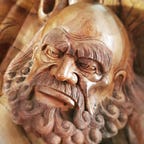Phở Heterodoxy on the High Plateau
“So what’s good here?”
They are asking about our breakfast options, and most smile and chuckle a bit at the question. They are Hanoians in their late 50s and 60s. The question is made funny by my being younger and not Vietnamese.
I am already driving them to a place I frequent when in Cao Bằng
“Have you ever had phở Cao Bằng?”
Laughter. They are cheerfully dismissive about the prospect. These Hanoians, like many of their generation, have an unabashed chauvinism about what is or is not truly Vietnamese. If it is being done differently than in Hanoi, then it is being done incorrectly. We are far from Hanoi, and this is phở we are talking about.
They feign resignation and agree to try it. In truth, they are curious and a bit eager to explain its shortcomings to me.
We pull up to Phở Bình Yên. It looks much like phở operations do all around the country: there are boiling pots and a serving station near the entrance, some inside seating in a no frills concrete block of a building, and tables wrapping around the outside on the pavement.
I gesture to an exterior table and head to the front to place our orders. Sitting around their table, my group verbally indexes everything they see around them in that manner older Hanoians insist on doing. They stick out, but in a way much more apparent to the other diners than to themselves.
The bowls that arrive are too shocking even to elicit the laughs they produced in theory. They are piled high with the unfamiliar in the otherwise accustomed mix of translucent broth, chopped green onions, and noodles. Roasted duck. Pork belly. Sausage. Back in Hanoi, these diners have been known to debate whether the now widespread use of chicken in phở is anything other than a gimmick. This is unheard of.
It is also delicious.
They sit looking at their bowls and each other. A few photos are taken. Local families and smiling groups of friends dine on all sides in this quiet provincial city. The sun is shining. The air is clean. For the first time all morning, they are quiet.
When I first started working in Cao Bằng, I frequently heard visiting Hanoians comment on how friendly the local people were. They said it with equal parts confusion and delight. When I brought this up with prominent Cao Bằng natives I knew, they all laughed in a knowing way.
“Because we are not Vietnamese!” was said with a slight bit of mischief.
Another elaborated, “We look Vietnamese. We speak Vietnamese. We are Vietnamese citizens. Even us,” he pointed to those at the table, “we are party members and government officials.” Then, tapping his chest lightly, “but we are Tày people, Nùng people — not Kinh.”
Unlike most of the country, ethnic Vietnamese (Kinh) are not the majority group in Cao Bằng. Here, highly-integrated ethnic groups such as Tày and Nùng live outwardly mainstream Vietnamese lives infused with nuanced elements of their own cultures, essentially allowing them to hide their differences in plain sight. The outcomes are lovely.
Later that day returning to Cao Bằng City from our morning’s work in the countryside, a voice from the back seat of the car broke a drowsy silence.
“Do phở places in Cao Bằng open for lunch?”
